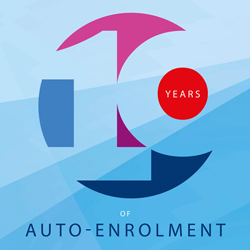The pensions industry was wrong to be sceptical about auto-enrolment
Misplaced scepticism on auto-enrolment
Otto Thoresen, formerly director general, Association of British Insurers, chairman, Nest and CEO, Aegon UK

My first connection with auto enrolment was in Washington DC in 2005. I was attending a joint conference with representatives of the UK and US pensions industry. At that time I was CFO at Aegon UK. The Turner team were there too, as well as Phil Wynn Owen from the DWP. It was clear that change was coming in workplace pensions. And the penny dropped for me that this change was going to put a lot more responsibility on the shoulders of UK citizens to make decisions on their financial futures. At least in part this was the beginning of my interest in improving financial capability and providing guidance to help people make those decisions.
The quality of the work of the Turner Commission created the opportunity to forge a consensus on the change across political parties and key stakeholders in the policy – the TUC, employers and the pensions industry to name but three. This is the main reason we find ourselves almost 20 years later with a policy in place which is clearly recognisable as the one Turner proposed.
For many years the industry was in denial that the change would happen. We had seen stakeholder pensions founder as a policy intervention. Then we were convinced that auto-enrolment would be a modest evolution rather than revolution. We were dismissive of the idea that workplace pensions could be priced at 50 bps (let alone the 30 bps proposed by Turner). And we were confident Nest would be a poor alternative to industry solutions.
History has proved us wrong on pretty well all counts.
But eventually the industry got the message, and the resulting collaboration across government and the private sector has been an extremely positive and successful one.
For a long time my thinking about auto enrolment was about an alternative to the existing pensions market. What I missed was that its biggest impact was to revolutionise participation in pension saving for millions who had never had the opportunity to save before. Nest has been a crucial intervention in achieving that, and in accelerating the move to a model where pricing for larger schemes has moved significantly below 30bps. It has driven innovation and improvement in investment, communication, simplification of connection with payroll systems and ESG. It was my privilege to chair the trustee board at Nest for seven years and the DWP and the Nest team should be very proud of what they have already achieved.
Levels of participation in pension saving have gone from under half to more than 80 per cent of workers. That’s a massive shift. And because of the regulatory framework the charge levels and quality of investment proposition that these savers are experiencing offer great value for money. The consensus has been maintained. This is a huge positive.
The smallest employers, and workers on low or moderate incomes, have access to quality pensions solutions previously only available to the mass affluent or employees of well-funded employer plans.
Of course, the approach, built on inertia, means that many savers are only slightly aware, if at all, that they are saving. And pot sizes are still, on the whole, modest.
So we are still in the foothills of this journey, but we have a fabulous basis to build on.
Looking forward as I write this in August 2022, the cost of living crisis provides auto enrolment with significant headwinds. How savings behaviour will be affected is far from clear.
Significant parts of the working population are still excluded from the system altogether – notably the self employed. And savings levels are for many, still far too low.
The ‘plumbing’ of the system needs improvement – small and micro pot consolidation, an effective pension dashboard to help people keep up to date with their savings are two clear examples.
But my biggest ‘outstanding item’ would be the provision of effective income solutions for those with small to medium pot sizes at retirement – those with five-figure balances rather than six-figure ones. I don’t see a solution emerging yet and it will soon be needed.
In summary, when I first heard about auto enrolment I was massively sceptical, and was sure that its effect would be marginal at best. How wrong I was! Watching the quality and determination of those who developed the policy, through the effectiveness of the execution and delivery, to the remarkable early success as the policy has been implemented, and the privilege of being associated with Nest through staging and coping with the pandemic, I have been and remain impressed and delighted with what has been achieved.
The savings landscape is transformed.
